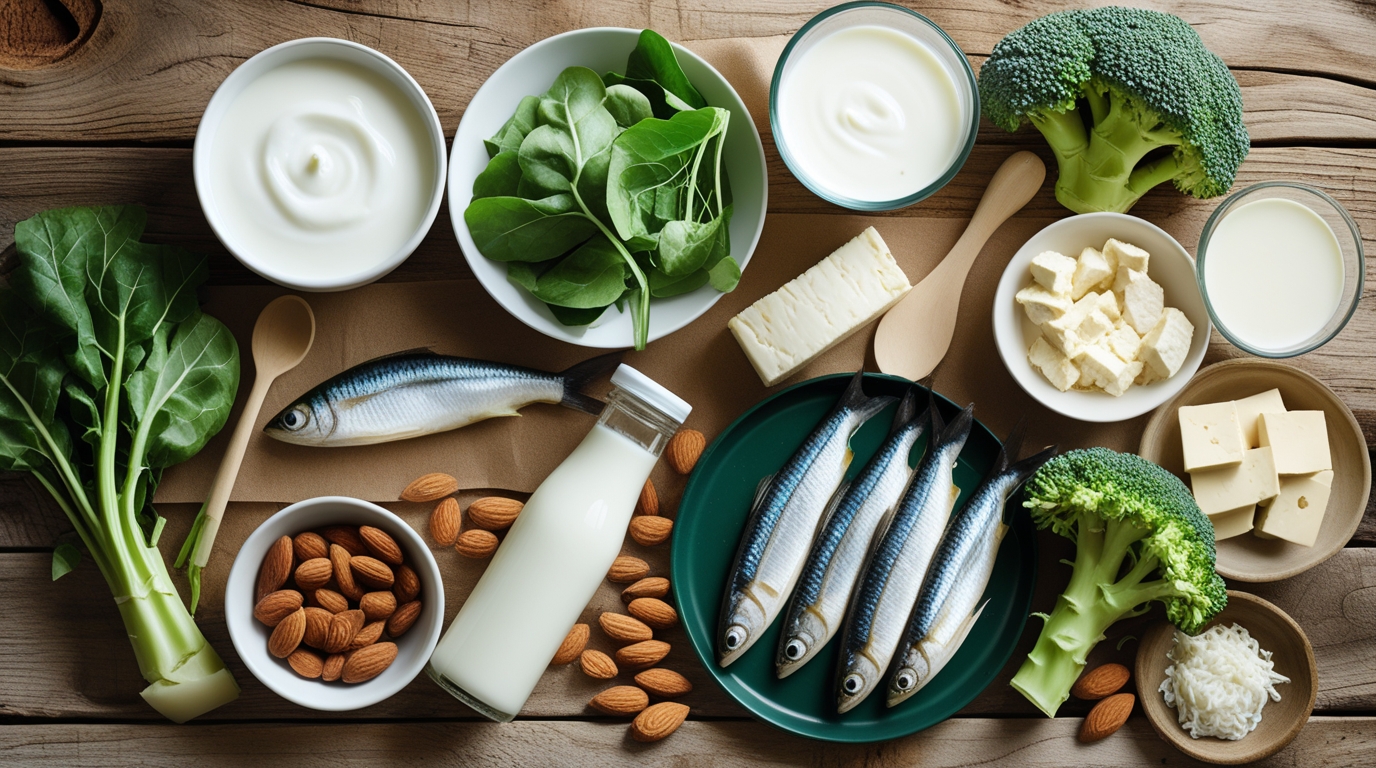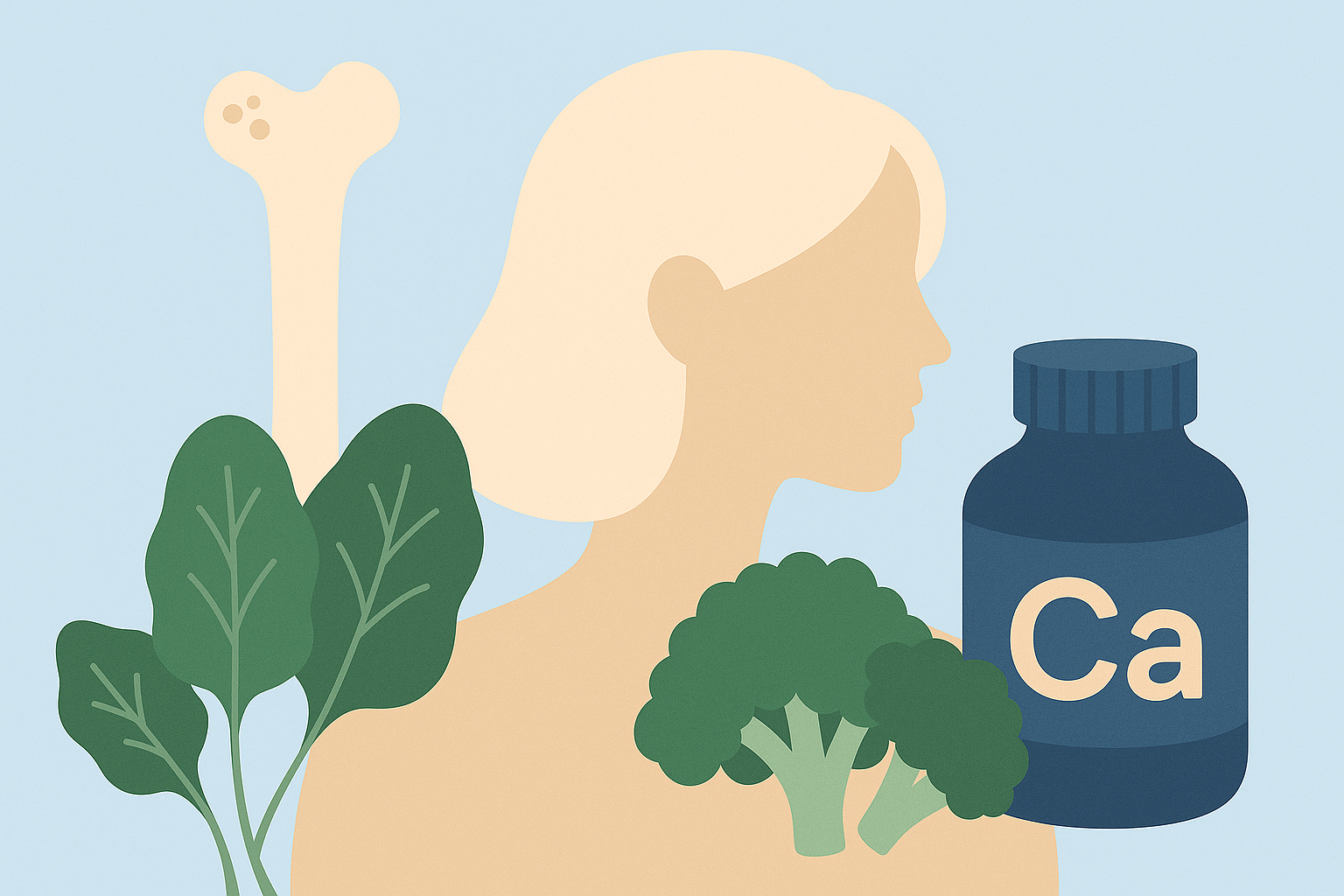Introduction
Calcium-rich foods are essential for building and maintaining healthy bones and teeth. Calcium also plays a critical role in blood clotting, hormone release, muscle contraction, and nerve transmission. However, many Americans—particularly women and older adults—do not consume enough calcium in their daily diets, despite its importance. In this comprehensive guide, we’ll explore the top calcium-rich foods, their health benefits, how to incorporate them into your meals, and when supplements may be necessary.
Why Calcium-Rich Foods Matter for Strong Bones
The most prevalent mineral in the body is calcium. It is essential for structural integrity because the bones and teeth contain about 99 percent of it. Osteoporosis or fractures can result from weak, brittle bones caused by insufficient calcium.
Eating calcium-rich foods daily helps you:
- Maintain strong bones and teeth
- Support heart, nerve, and muscle function
- Prevent bone diseases and age-related bone loss
Related: Magnesium vs. Calcium
Top 10 Calcium-Rich Foods in the United States
1. Yogurt
Calcium per cup: ~300 mg
Details: One of the greatest natural sources of calcium is yogurt. Probiotics, which promote intestinal health, are also included. For more protein and fewer sugars, choose plain, low-fat Greek yogurt. You can use yogurt as a nutritious snack or in smoothies and breakfast bowls.
Yogurt – Best Greek Yogurt on Amazon (affiliate link – helps support our blog at no extra cost to you)
2. Cheese
Calcium per ounce (cheddar): ~200 mg
Details: In addition to being high in calcium, cheese also contains fat and protein. However, since it is high in saturated fat, moderation is essential. Hard cheeses like Parmesan provide even more calcium per gram.
Shop Best Cheese Options on Amazon
3. Collard Greens / Kale / Spinach
Calcium per cup (cooked): ~200–250 mg
Detail: For vegetarians, leafy greens are a great plant-based source of calcium. However, because spinach contains oxalates that can hinder calcium absorption, pairing it with foods high in vitamin C may help.
Buy Fresh Organic Kale on Amazon: Shop Now
4. Canned Sardines (with bones)
Calcium per 3 oz: ~325 mg
Detail: Packed in calcium, vitamin D, and omega-3 fatty acids, sardines are a superfood. The primary source of calcium is found in the soft, edible bones. They taste fantastic on toast or in salads.
5. Fortified Plant-Based Milks (Almond, Soy, Oat)
Calcium per cup: ~300 mg (check label)
These are perfect for people who are lactose intolerant or vegan. Since calcium can settle at the bottom, choose unsweetened varieties and shake well before using.
Buy fortified plant-based milk on Amazon
6. Milk (Cow’s Milk)
Calcium per cup: ~300 mg
Detail: A staple for many, milk provides not only calcium but also vitamin D and protein, all of which work together to build bone strength. Low-fat versions are heart-friendlier.
7. Almonds
Calcium per ounce: ~75 mg
Details: A nutrient-dense snack that is rich in fiber, calcium, and good fats. Almonds can be roasted, eaten raw, or mixed into yogurt bowls and salads.
8. Fortified Cereals
Calcium per serving: Varies (~100–1000 mg)
Details: Many breakfast cereals are fortified with calcium and essential minerals, making them an easy way to boost your intake. To keep it healthy, choose cereals with lower sugar content by checking the nutrition labels carefully.
Shop Fortified Cereals on Amazon
9. Broccoli
Calcium per cup (cooked): ~60 mg
Details: Broccoli is rich in vitamin C, fiber, and antioxidants, making it a nutritious choice. While its calcium content is lower than dairy products, it still contributes beneficially to your daily intake.
10. Tofu (Calcium-Set)
Calcium per ½ cup: ~250–860 mg
Detail: Tofu prepared with calcium sulfate contains high levels of calcium. It’s versatile and can be added to stir-fries, salads, or grilled.
Shop Calcium-Set Tofu on Amazon
FAQs: Calcium-Rich Foods in the United States
Q1: What is the daily recommended calcium intake?
Men over 70 and women over 50 require more than 1,200 mg daily, whereas adults normally require about 1,000 mg.
Q2: Can I get enough calcium from food alone?
A lot of people can get enough calcium from their diet. However, certain individuals may require supplements, especially if they have dietary restrictions.
Q3: Are plant-based calcium sources effective?
Yes, especially when paired with foods that enhance absorption, such as those high in vitamin C
Q4: What are the signs of calcium deficiency?
Symptoms include brittle nails, frequent fractures, muscle cramps, and dental problems.
Q5: How do calcium and magnesium work together?
Magnesium helps the body absorb calcium and regulates its function. To learn more, read our guide on Magnesium vs. Calcium.
Conclusion: Prioritize Calcium-Rich Foods for Stronger Bones
One of the simplest and most effective ways to protect your bones, muscles, and overall health is by incorporating calcium-rich foods into your daily diet. To meet your calcium needs, prioritize whole foods such as dairy, leafy greens, tofu, and fortified products.
For more information, check out this trusted guide from the National Institutes of Health.
If needed, consider adding high-quality calcium supplements to your routine. Always consult a healthcare professional before starting any supplement.
Call to Action
Start today! Add at least one calcium-rich food from the list above to your next meal and support your bone health naturally. Whether it’s almonds, broccoli, tofu, or fortified cereals, making these choices can help boost your daily calcium intake.
Disclaimer
This article is for informational purposes only. It does not offer medical advice. Please consult your healthcare provider before making changes to your diet or supplement routine.



